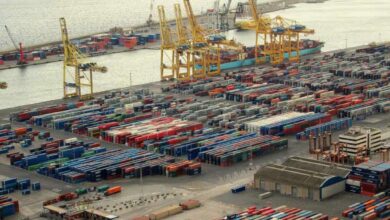
Heat waves, landslides, floods… In four decades, these meteorological disasters have caused the death of 142,000 people.
Extreme weather events are set to increase in the years to come, under the effect of climate change. They have taken 142,000 lives and cost nearly 510 billion euros in Europe over the past 40 years, according to a report published on Thursday 3 February. In its study, the European Environment Agency (EEA), headquartered in Copenhagen, calls for continued adaptation measures at both individual and state level, with only a quarter of recorded damage being insured.
“Climatic” events, mainly heat waves, but also cold spells, droughts and forest fires account for 93% of the total number of deaths and 22% of financial damage, according to the report based on data from the CATDAT organization. If the human losses they caused are much lower, floods were the costliest disasters in money, 44% of the total bill, ahead of storms (34%), according to this report.
A few very serious events concentrate the bulk of the balance sheet: 3% of the disasters identified are thus responsible for approximately 60% of the financial cost for the period 1980-2020. The 2003 heat wave alone caused the death of some 80,000 people in the 32 European countries studied, including the 27 members of the European Union as well as Turkey and the United Kingdom.
Globally, the World Meteorological Organization estimates that the number of weather-related disasters has increased over the past 50 years, causing more property damage but fewer deaths. For Europe, the EEA considers that the data for the past 40 years do not allow concluding with certainty that these phenomena have increased due to climate change due to the very irregular damage depending on the year, but that the risk will increase. increase in the very near future.
“All the disasters that we describe as weather and climate related are influenced by climatic conditions. But that does not mean that they are all influenced by climate change,” an expert from the European agency, Wouter Vanneuville, told AFP.
Recent studies, in particular the work of the IPCC, show that the frequency and severity of events such as droughts and forest fires are better explained when climate change is taken into account, he nevertheless recalled. For others, such as hailstorms, evidence is still lacking. In Europe, climate models predict more frequent and more severe events, whether storms, floods, wet landslides or droughts and forest fires, warned Wouter Vanneuville.
“For certain types of phenomena, such as non-tropical storms, the climate signal in Europe is not clear and therefore it is not certain that they are increasing. But for others, like droughts (not only in the Mediterranean, but in most parts of Europe), climate forecasts point to an intensification,” he explained. Measures taken at both individual and state level are essential to avoid the risks associated with extreme events and limit damage, recommends the EEA. “After 2003, similar heat waves caused fewer deaths thanks to the implementation of adaptation measures”, such as the installation of air conditioners, underlines the agency.
At the national level, Germany is the European country that has suffered the most with 42,000 deaths and financial losses amounting to 107 billion euros. France follows (26,700 dead and 99 billion euros in damage) and Italy (21,600 and 90). Only 23% of properties that suffered material damage across Europe were insured, but the disparities are huge: for example, 1% in Romania and Lithuania compared to 55% in the Netherlands or 56% in Denmark.
Disasters like earthquakes and volcanic eruptions are not included in these figures, as they are not meteorological. According to a similar assessment established by the American meteorological agency NOAA, the United States has suffered 310 meteorological and climatic disasters since 1980, for damages exceeding 2,155 billion dollars.



